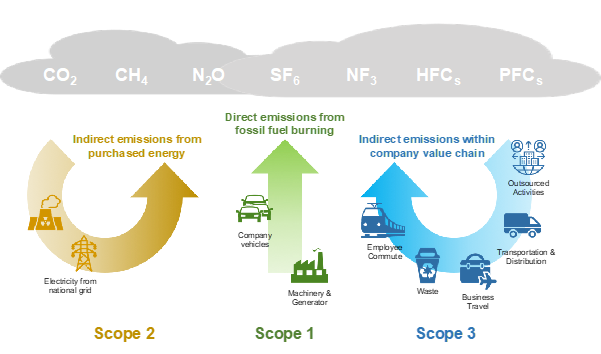The global greenhouse gas (“GHG”) emissions have risen to unprecedented levels. Without drastic action to reverse this trend, the consequent rise in global temperature could lead to catastrophic weather phenomena and climate events.
Both public and private sectors have a role to play in minimising GHG emissions and mitigating the effects of climate change. In December 2015, the international community signed the Paris Climate Agreement, pledging to limit the average global temperature increase to below 2°C. This was reiterated in November 2021 in Glasgow.

Source: https://www.beforetheflood.com/explore/the-solutions/the-promise-of-paris/
COP26 in Glasgow saw new commitments by world leaders to mobilise the private sector in the fight against climate change, as well as set Net Zero Carbon Footprint as a core principle for businesses. Governments are likely to emphasise on establishing a decarbonisation strategy for companies which involves laying the foundation for governing carbon markets and trading system.

Source: https://thewire.in/environment/cop26-glasgow-climate-pact-damages-fossil-fuels
What is carbon footprint and why does it matter?
A corporate carbon footprint is the calculation of GHG emissions – direct and indirect – generated by a company’s value chain, including all emissions for a specific period of time.
Calculating a company’s carbon footprint serves several purposes, such as
- Transparency about its own emissions
- Identifying climate-related risks and opportunities
- Demonstrating to stakeholders the company’s seriousness to pursue climate-related initiatives.
Carbon Footprint Assessment
Carbon dioxide is considered the main GHG as it is far more abundant in the atmosphere and the main contributor to environmental hazards. Businesses can contribute to the climate agenda by conducting a carbon footprint assessment which measures the total amount of GHG emissions at different stages of a company’s value chain. ISO 14046:2014 (Environmental Management – Water Footprint] and GHG Protocol are the most widely recognised standards utilised by corporations for quantifying their GHG emissions. The GHG Protocol categories carbon emissions into three main scopes as illustrated below.

Leading the Path to Net Zero

Completing the carbon footprint assessment is only part of the equation. Through the assessment, businesses can evaluate areas of concern within the company where carbon emissions are significantly higher than usual. However, there is a limit to the amount of emissions that can be mitigated within the business operations.
To achieve net zero emissions, companies must take a proactive role in leading their stakeholders, as well as the entities involved in their supply chains and the communities within which they operate, to consciously choose to reduce their carbon footprint, thereby clearing the path towards net zero.
